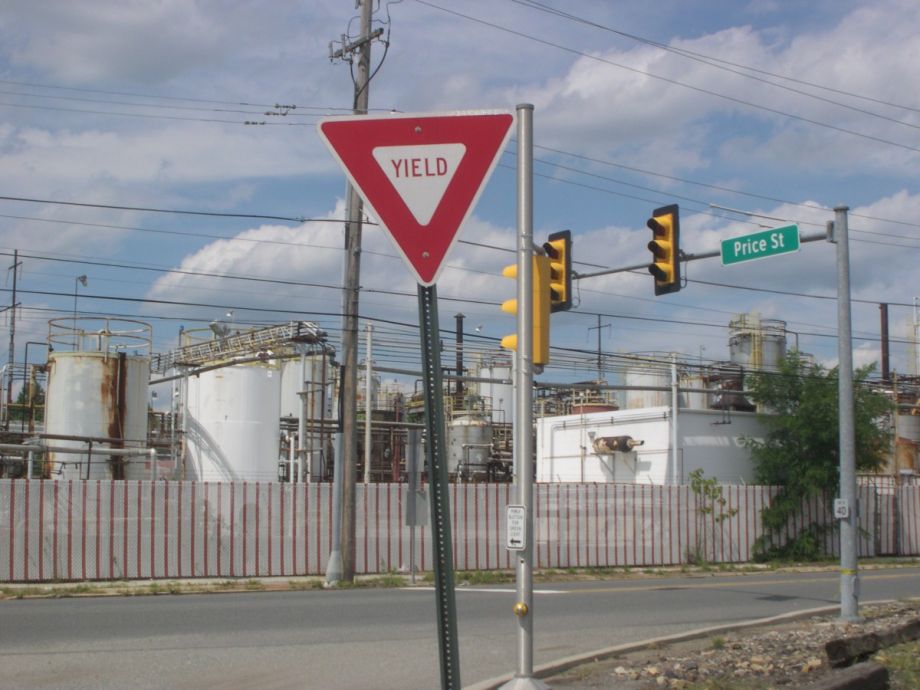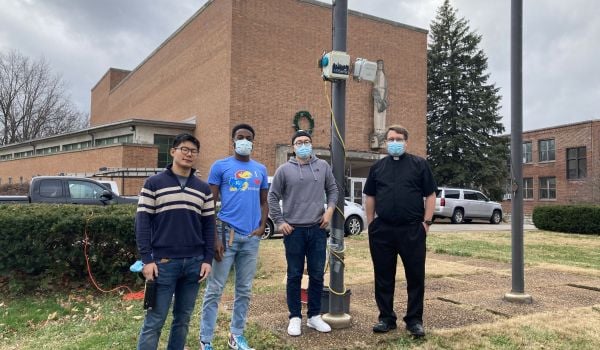Some 15 miles southeast of Philadelphia, not far from a rust-covered salvage facility, a meeting begins at the Faith Temple Holy Church in Chester, Penn. Inside, the Reverend Horace Strand, founder and spokesmen for the Chester Environmental Partnership, confronts Chester City Councilmember William Jacobs about a lack of communication with the city since an administrative change-up.
Jacobs, seated across from Strand, is not defensive or embarrassed — he assures that he will look into the problem — but the confrontation is markedly the most intense in the otherwise cordial bimonthly gathering.
In a city where particle and ozone pollution was recently graded F by the American Lung Association, interactions between the local government and Chester’s sole exemplar for environmental justice could be much more strained. But Strand, who dictates the meeting with a balance of humor and procedural detail, does not seem like the type to bring down fire and brimstone. A Chesterian by birth, he is soft-spoken and well acquainted with most of the attendees, including residents, members of the EPA and representatives from local industries and public services.
The whole point of the organization, says Strand, is to bridge the gap between residents, industries and government. This includes arming citizens with a better understanding of the regulatory process (copies of the state’s “Plain Language Guide to Regulations” are stacked by the door of the church). But it also involves preempting infractions by maintaining links with the very industries the Chester Environmental Partnership (CEP) seeks to better regulate.
“A lot of times the awareness of the threat keeps [industries] from doing it,” says Strand, referring to the kind of political pressure the CEP wields.
Strand is attempting a formula that may seem impossible in a city so at odds with itself. Even as the state and county facilitate new development, employment in Chester remains stagnant and the environment worsens. If Strand succeeds in the task of transitioning the CEP from a small, antagonistic group of activists to a mediator and community leader, he will have created a model for dealing with environmental justice in one of the U.S.‘s most polluted cities.
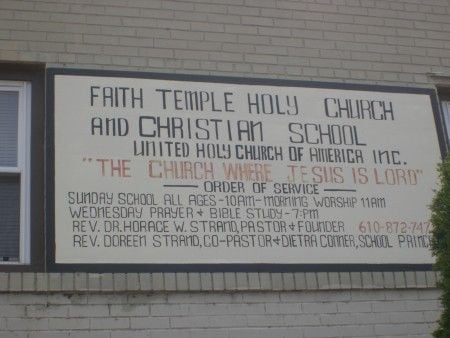
Horace Strand holds meetings at Chester’s Faith Temple Holy Church, where among other things his organization, the Chester Environmental Partnership, educates the public about state environmental regulations. Credit: Alex Vuocolo
“The Path of Least Resistance”
Chester’s narrow 4.8 square miles are seen by most from the perch of Interstate 95. The orange lights that speckle the waterfront industries illuminate the city’s rooftops, but leave its bedraggled storefronts and row homes obscured.
Indeed, those lower reaches of the city are everywhere shadowed by behemoths. Harrah’s Casino and a state prison dominate a large part of the city’s eastern edge, while the recently finished PPL Park, a state-subsidized soccer stadium, fits like a puzzle piece between the smoke stacks of Covanta Waste Energy Co. and the Commodore Barry Bridge.
Once a prosperous epicenter of hard industry and shipping in the 1920s — so prosperous that former Pennsylvania governor and Chesterian William Cameron Sproul proclaimed that, someday, Chester would annex Philadelphia — the city languished as industry and population bled into the suburbs following Word War II.
Since then, attempts at revitalization have varied in their scope and success. The 1960s marked a period of urban reform emphasizing job training and education. But with the continued collapse of the city’s manufacturing base, conditions only worsened at the onset of the ’70s.
What followed was an era of public-private partnerships that often fast-tracked land use variances and regulatory permits for waste facilities. As a result, plants dedicated to everything from infectious medical waste to sludge sprouted up across the city, particularly along the waterfront.
Christopher Mele, in an article last fall for Social Science History, examines the policies that led to the clustering of waste facilities in Chester. He writes that “cooperation between government and the private sector excluded any mechanisms for meaningful citizen participation and dissent.” He also points out that the facilities lacked local government oversight and had “extensive autonomy over operations.”
Strand refers to Chester at this time as “the path of least resistance” for companies seeking to establish facilities that would be resisted elsewhere. According to Mele, the decision to create a “waste enclave” was appealing to county and city officials because of the revenues generated through operating fees, but the influx of facilities created few jobs and tended to reuse already contaminated industrial land.
“Together with its ghettos, Chester is a city of fragments,” writes Mele. This fragmentation is evident from afar — especially at night, as the row homes darken and the isles of industry glow orange — but also from within Chester, where neighborhoods are suddenly sheared away by a barbed wire fence or walls of corrugated metal.
Making Gains
Resistance from within the city finally emerged in the early ’90s with the formation of the community-based organization, Chester Residents Concerned for Quality Living (CRCQL), which Strand helped establish in response to residents aggravated by health concerns, noise and odors.
Strand had awakened to the severity of Chester’s environmental condition just prior to joining the organization. “I never saw it as a priority,” he says. “But when I began to see how people were being treated so close to me, I felt my responsibility to give leadership and help.” He recalls a particular instance when he saw children playing on either side of a street heavily trafficked by open-bed trucks.
Coinciding with the widespread acknowledgment of environmental justice issues, CRCQL sued Thermal Pure Industries in 1993 for negligent practices, such as leaving trucks filled with infectious medical waste out on the street on a hot summer day for a period longer than permitted by law.
The lawsuit, overturned by a local court, was followed quickly by CRCQL’s second attempt at litigation, and the case that would draw national media and legal attention to Chester and environmental justice.
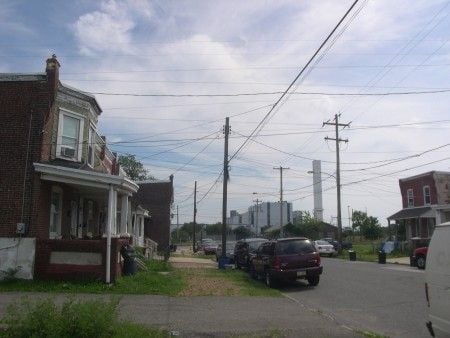
Once a prosperous epicenter of hard industry and shipping in the 1920s, Chester languished in the decades following World War II, winding up a magnet for waste facilities. Credit: Alex Vuocolo
CRCQL sued the Pennsylvania Department of Environmental Protection (DEP) for issuing a permit to Soil Remediation Services, a contaminated soil treatment plant. The organization alleged that by concentrating so many waste facilities within a predominately African-American community, the DEP had violated the Civil Rights Act of 1964. And although the case was dismissed by the Supreme Court after SRS withdrew its application for the permit, CRCQL had gone father than Strand had ever expected.
Joel R. Kuperfan, executive director of the New York Environmental Justice Project, says that the case is “a little bit out of public memory,” due to environmental justice cases that followed it, but that it was nonetheless important in how it highlighted the racial aspect of environmental injustice.
(Even today, Chester receives less coverage than those concerned with its environmental plight believe it deserves. To whit: After introducing myself as a reporter, the attendees of the CEP meeting broke into applause.)
But litigation as a strategy became too much for CRCQL to sustain, and disbanded soon after the second lawsuit was dismissed. As stated on the CEP’s website: “It became clear that, although communities could make environmental gains through litigation, such gains were hard fought and often occurred long after the fact of the environmental harms.”
Strand admits that his history as a part of a “somewhat more militant movement” has complicated relations with local government and industry, which is exactly why he has made such a deliberate effort to reorganize and redefine the CEP.
“When CRCQL disbanded and was no longer operating, it left a void for us to step in and to play the role that we’re playing now,” he says.
That role was based on a careful balance of Strand’s optimism and pragmatism. There is an acceptance that facilities like Covanta Energy’s waste-to-energy plant — which processes all of the solid waste produced in Pennsylvania’s Delaware County — are probably not going away any time soon. “What we couldn’t stop, we realized we had to live with. But we at least wanted them to be good neighbors,” he says.
Considering that a representative from Covanta attends each bimonthly meeting of the CEP, Strand can say that he has at least been successful in getting industries to the table.
The difficulty is that providing a medium for interaction is only half the battle. The CEP is also actively working to alleviate the impact of environmental degradation in the community and also to prevent more permits from being issued that would allow additional facilities to be built or expanded.
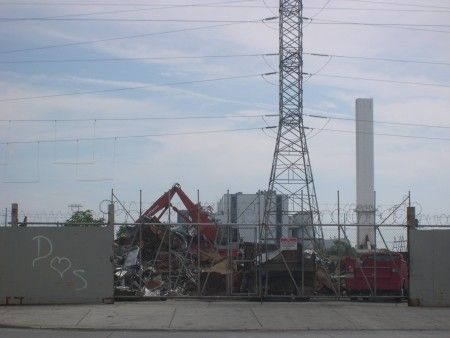
The American Lung Association gave Chester a failing grade for its levels of particle and ozone pollution. Credit: Alex Vuocolo
As recently as 2010, Strand publicly expressed outrage at a permit given to the Delaware County Regional Water Quality Control Authority (DelCORA) to treat waste water from hydraulic fracturing in the Appalachian Basin. DelCORA has since retracted from the permits in an effort to stay clear of conflict, according to a local news source.
Whether DelCORA was heeding Strand or simply side-stepping a regulatory tangle is an important distinction, but the CEP’s connections with regional and federal players, such as the EPA and the University of Pennsylvania, have made the organization harder to ignore.
Richard Pepino, deputy director of the University of Pennsylvania’s School and Medicine, has served as a link between the CEP and the University in their efforts to address health problems in Chester caused by environmental degradation. According to Pepino, an academic presence has helped lend legitimacy to the CEP’s concerns. “We bring an expertise to the table that make industries think twice,” he says.
As for engagement with the federal government, the CEP has shown how the EPA can be used as a tool at the local level. In addition to the regulation guide available to attendees, the CEP’s website includes a section called the “Issues Resolution Matrix,” which lists topics of problems and the recommended agency to contact.
“We’ve found that the environmental movement is not a movement that you can limit to a certain locality,” says Strand. “When you have a government that is not responsive to the environmental justice issue, they want to isolate you within that locality.”
Today, the wide-ranging attendance of the CEP’s bimonthly meeting is a testament to the success of its model, but it is also a testament to the hard lessons that Strand and the city itself has endured.
“We haven’t solved all our problems,” says Strand. “But we’ve proven there is a way to solve problems.”

